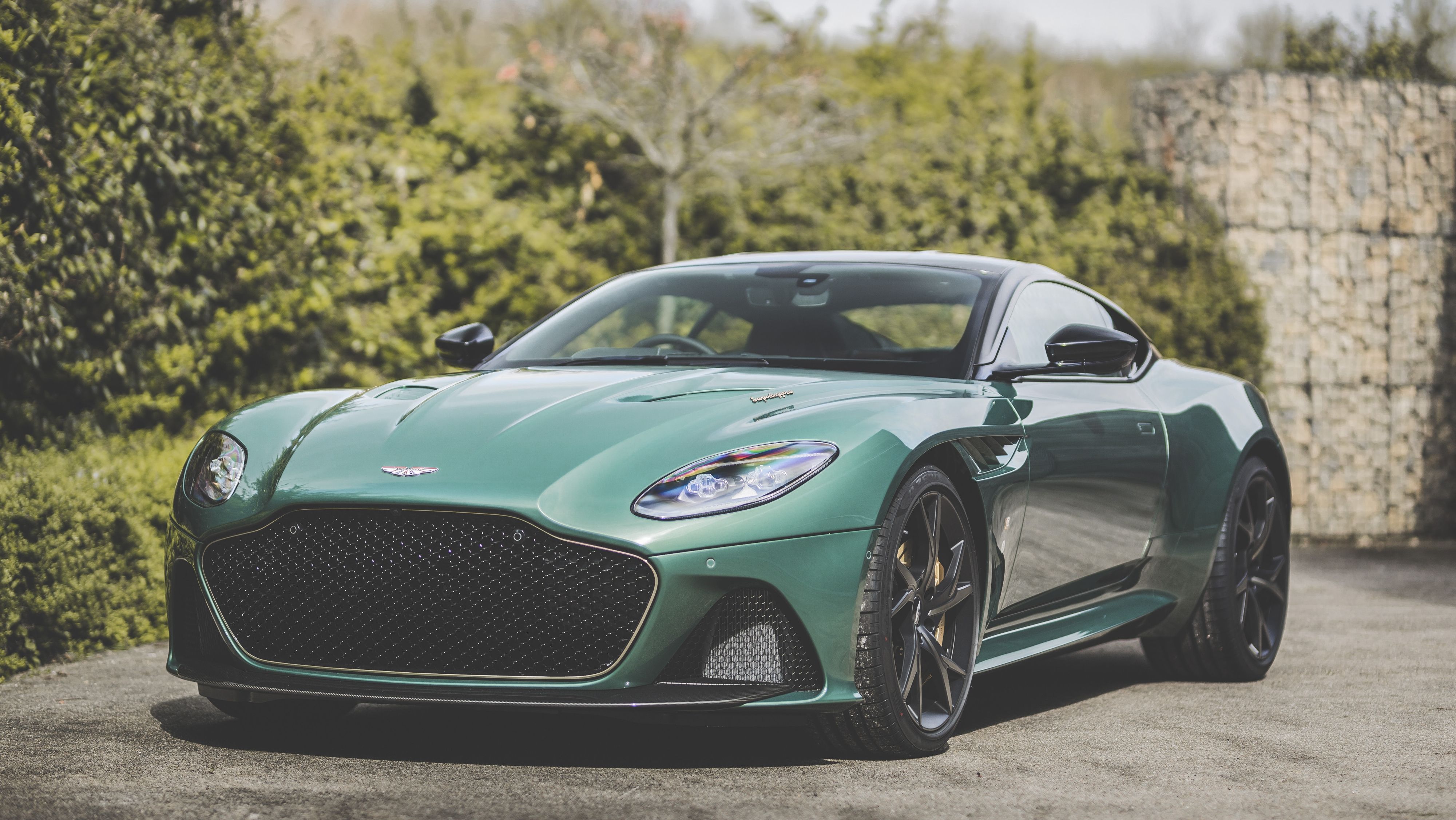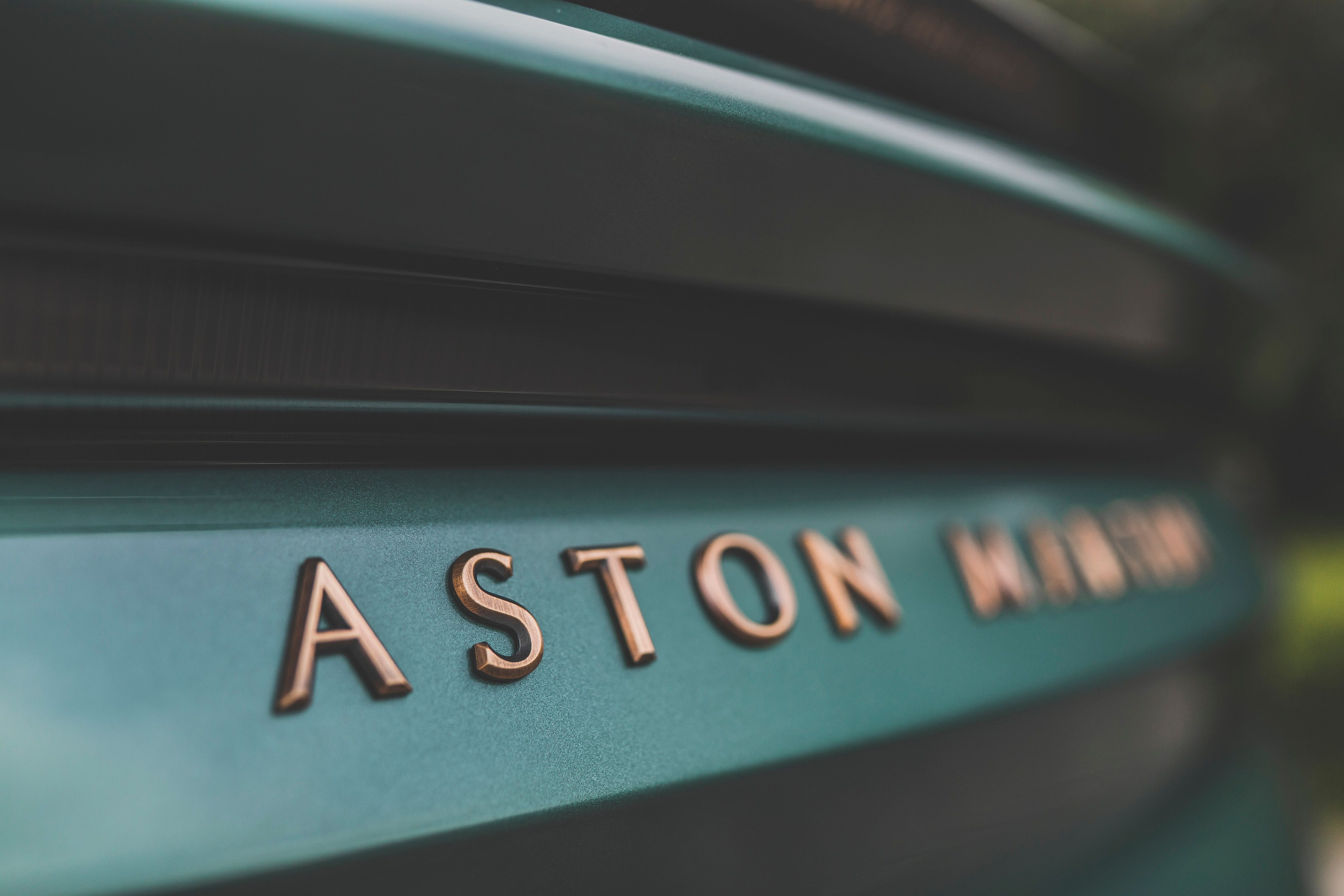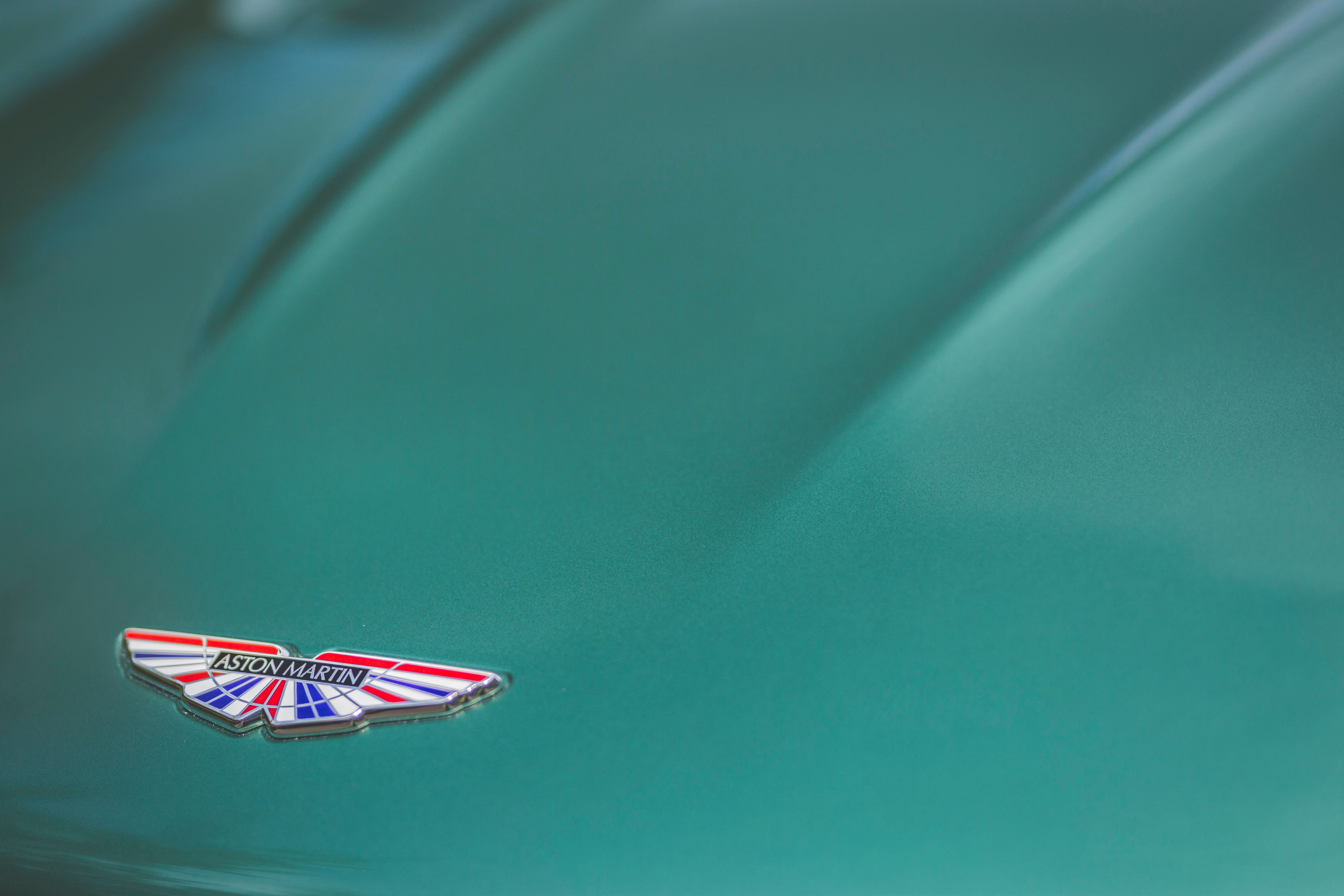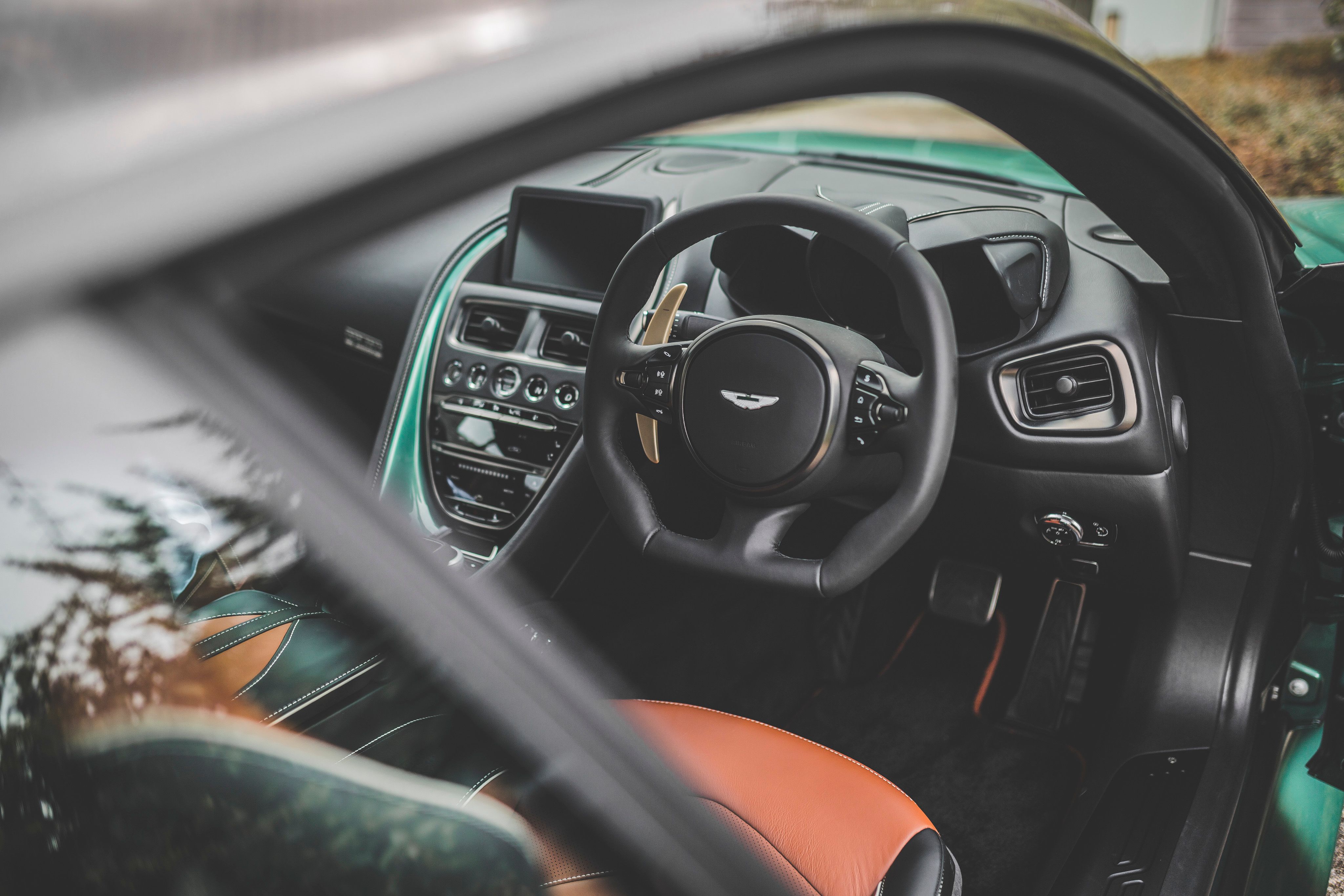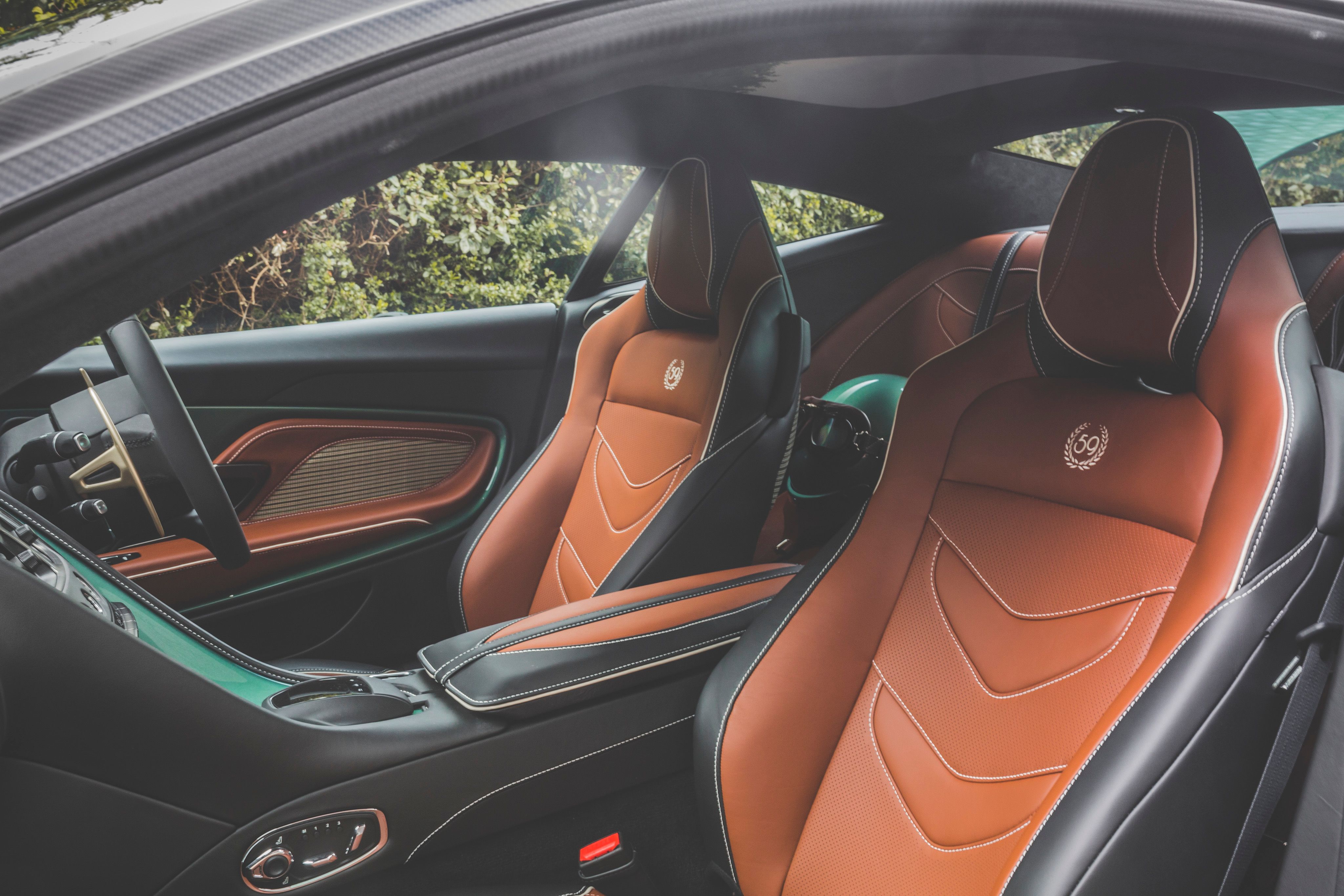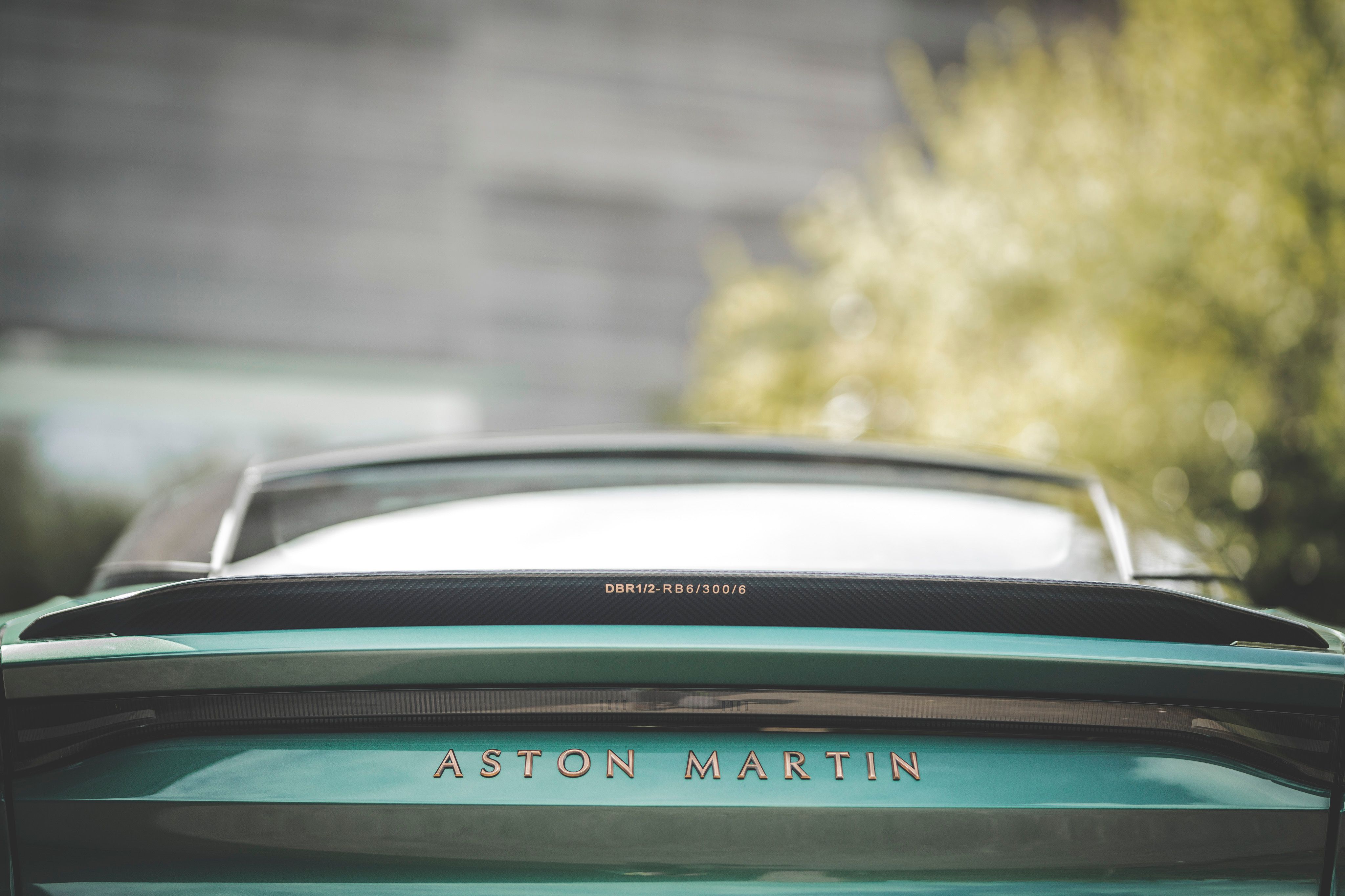If you want the ultimate front-engined Aston Martin experience and your bank accounts are adequately full, you have to go with the DBS Superleggera - the 715 horsepower monster that weighs under 4,000 pounds and can reach 211 mph. If you're crazy about the brand's history, then the DBS 59 is the car for you as it looks back at Aston's first big splash in motorsport.
We've talked about the DBS Superleggera 59 before when Aston Martin first released a few pictures of the new limited-edition model commissioned by Aston Martin Cambridge for an occasion like no other in the brand's history: the 60th anniversary of Roy Salvadori and Carroll Shelby's sole overall win at Le Mans aboard the works-backed Aston Martin DBR1/300. We're talking a lot here about a variety of manufacturers trying to find any sort of reason that could warrant the introduction of a special model, but this one right here is really special.
Why? Because it's a way at looking back while keeping in mind that Aston Martin might mount an attack on Le Mans with its sights locked on the overall victory with a 'hypercar' as per the new regulations that are set to be introduced in the World Endurance Championship in little over a year. These new rules, apparently, will allow Aston Martin Valkyrie-type cars to compete in what is currently the LMP1 category.
You Can't Help But Grin When You See an Aston Painted in British Racing Green
Aston Martin is keeping itself busy lately. Just the other day the British sports car manufacturer released the first official images of the Aston Martin Rapide E, the no-noise, no-fuss version of the four-door Rapide, one of Aston Martin's unsung heroes in my book. Earlier this month, we also caught glimpse of some drool-worthy renders depicting Aston Martin's tribute on Carrozzeria Zagato's centenary - a voluptuous front-engined GT that looks like a One-77 made even more aggressive.
Now, Andy Palmer's boys were courteous enough to let a DBS 59 bathe in the sun a little bit and, luckily, a photographer was on hand to capture the car with all of its curves exposed by the warming rays of the Spring sun. The pictures capture what must be one of the most tasteful special edition models made in the past couple of years, right down to the bronze details on the body.
As I said, the DBS 59 is finished in British Racing Green (one of the many tints of British Racing Green out there, that is) and even some elements that are black on standard Superleggeras - like the side vent strakes and those on the hood - were covered in green. Britain's national racing color is combined with subtle touches of bronze. There's bronze on the thin frame of the gaping mouth in the front, on the spokes of the rims, on the big brake calipers, as well as the logos on the fenders, the fixed rear wing in the back, and the lettering on the trunk lid.
Inside, you get a bonus dose of British Racing Green on the center console and the interior door panels that may not look good in most interiors, but when you mix it with Chestnut Tan and black leather, it oozes cool. On top of that, the stitching is gold as are the flappy paddles behind the three-spoke steering wheel. The seat backs are adorned with the number 59 surrounded by laurels and the fabric inspired by the DBR1 seat material to drive home the point. In case you're wondering which number was on the winning DBR1 in 1959, you'll have to step back out and look for the small white roundel below the side air vents.
You'll be happy to know that the DBS 59 remains the same mind-bending tire-scorcher we've come to know and love. That's why, along with the car, you get a color-matched helmet.
Still, if you want a faster front-engined Aston Martin, you must pay $2.5 million for a 220 mph One-77. The DBS Superleggera in standard trim will set you back a meager (in comparison) $308,000. We expect this - maybe sold-out - special edition to be more expensive by quite a margin but we don't know the exact number, you'll have to send an inquiry to Aston Martin Cambridge as no Aston Martin dealer can sell you one.
2020 Aston Martin DBS Superleggera Drivetrain Specifications
|
Engine |
All-alloy quad overhead cam, 48-valve 5.2-litre bi-turbo, V12 with stop/start cylinder deactivation |
|---|---|
|
Cooling |
Water-to-air Charge |
|
Drive |
Front mid-mounted engine, rear-wheel drive |
|
Compression ratio |
9.3:1 |
|
Maximum power |
715 HP @ 6,500 RPM |
|
Maximum torque |
663 LB-FT @ 1,800-5,000 RPM |
|
Acceleration 0-62mph (0-100km/h) |
3.4 seconds |
|
Maximum speed |
211mph |
|
Transmission |
Rear mid-mounted ZF eight-speed automatic |
What's All the Fuss About that One Le Mans Victory?
Why does one Le Mans victory matter that much? After all, Audi has 13 it amassed in just 20 years, and Porsche collected 19 since 1970. Ferrari too gathered nine and, among Aston Martin's homeland rivals, both Jaguar and Bentley can brag with more wins. Even a relatively unknown manufacturer like Lorraine Dietriech has more wins than Aston Martin, and you don't see the French put out a celebratory model now. With this being said, the company has been out of business for decades, and the same goes for Talbot-Lago or Chenard & Walcker, but Aston Martin is allowed simply because it's still around.
Back in the '80s, famed team owner and racing driver Tom Walkinshaw, the man that spearheaded Jaguar's works return to endurance sports car racing after three decades of absence, said that a manufacturer needs three years to win Le Mans with a car. In the first year, you test things out and see what breaks, in the second you iron out pace-related issues and further fiddle with setup and reliability so that at your third attempt you can deliver the goods. Sure enough, Jaguar returned to sports car racing in 1985 and won... at its fourth try in 1988. What matters, though, is that Aston Martin respected this recipe with the Ted Cutting-designed DBR1. The car debuted in 1957 and, in 1959, it scored a double at Circuit de la Sarthe, admittedly without some serious threat from other works teams. But the DBR1 was no Sunday driver.
Some of you may say Damon was just uttering nice words to the people that let him hustle for a precious few laps a sports racer from a by-gone era but no. The DBR1 belies its years and goes like a bat out of hell when you want it to. Under the sleek body is a steel spaceframe that nestles the RB6 3.0-liter, inline-six engine which, in the period, put out about 255 horsepower at 6,000 rpm fed by three 50DCO carburetors. It may not seem like much today - a decade-old Ford Mustang GT packs 300 ponies - but the chassis was wonderful and this made the lithe DBR1/300 handle like a dream. Handling matters when you go into a 24-hour race since nobody likes to fight a growling beast that wants to send you to your maker through every bend - something like the Ferrari 375 Plus.
So, why didn't the DBR1 win sooner? The record books tell us that Jaguar's venerable D-Type won in 1956 and 1957 and then Ferrari rebounded to take home a victory with the glorious 250 Testa Rossa of Belgian Olivier Gendebien and American Phil Hill. That year, though, an Aston did come home second some 12 laps behind the Ferrari, but it wasn't a DBR1. It wasn't even a works entry. In fact, David Brown's honor laid that year on the shoulders of brothers Graham and Peter Whitehead who, through fog and rain, beat a couple of 2.0-liter Porsche 718RSKs.
"The transaxle gearbox was always a pig," concludes Willie. The unit is a CG537 five-speed, unlike the four-speed found in the DB3S, and it wasn't the only thing wrong with the beautiful two-seater according to Frank Gardner who, at 28, used to work for David Brown. "We could never get the gearbox to work; it was okay for a tractor, but not a race car," the Aussie bluntly concluded. "The ergonomics of the car were all over the place," added Gardner who put the blame for this on designer Cutting who, he said, didn't have a license and, what is more, "had a propensity for hitting things."
The Build-Up to The 1959 Victory
1958 was the year when Ferrari introduced the Andrea Fraschetti-penned 250 Testa Rossa. The skin was striking thanks to Sergio Scaglietti's magic tricks but, under the pontoon fenders, there was nothing to write home about: a ladder-style chassis to which a solid axle was hung at the back as well as drum brakes all around. The engine was a bigger iteration of Gioacchino Colombo's classic V-12 he came up with some 11 years prior and it was mated to a four-speed gearbox. But, for all its archaic nature, the Testa Rossa was no slouch: that V-12, the work of Franco Rocchi and Walter Salvarini, was said to make 300 horsepower around the redline. Ferrari routinely overestimated the output of its engines at the time, but it's safe to assume it offered more oomph than the 250-odd horsepower of the most potent DBR1s of the day.
Aston Martin, though, had maneuverability up its sleeve. Thanks to its chassis, independent suspension, and Girling discs, the car was perfectly balanced and would slide effortlessly in full control of the man behind the large steering wheel. But it wasn't enough. Ferrari won at Buenos Aires and then at Sebring, where the DBR1s fell to the wayside when the transmissions went kaput. Then, at the Targa Florio, Stirling Moss drove masterfully and lowered the existing lap record by 49 seconds. Coincidentally, it was his own record that Stirling had bettered, a record he put on the board in 1955 aboard the 300 SLR with Denis Jenkinson on his right spewing out pace notes. Sadly, it was too little too late: Ferrari won at Le Mans, and the DBR1s didn't even reach the finish line, as I've detailed previously.
The work off right away and two of the Pinin Farina-bodied cars finished first and second overall. Alec Ulmann wanted to have an Aston Martin on the grid at all costs, so he ponied up $4,500 in prize money, but they all went to Maranello because the sole Aston retired early. Moss, who'd driven superbly to win the Nurburgring 1,000-kilometer race the year before, reckoned he could do it all over again if only Feltham would give him a car. He even vowed to pay all of the expenses for the trip.
Reg Parnell, who was part of the team's management and ultimately replaced Wyer, obliged and Jack Fairman teamed-up with Moss. In the not-yet-nicknamed 'Green Hell,' Moss proved why he's one the best racing drivers of all times. "Stirling began by breaking his own lap record of 9:43 on 16 consecutive occasions, leaving it at a remarkable 9:32. In the process, he established a staggering lead of 5:40. It all went away in a jiffy when Fairman slid wide and ended up in a ditch. Somehow, maybe powered by the sheer frustration, Fairman drove out of the ditch and returned to the pits to find Moss packing to head back to Britain.
After the stop, "Stirling launched into one of his famous comeback attacks. He reeled in the Ferraris and, after ten laps and a stop for fuel, gave the Aston back to Fairman with a lead of 1:47. Jack did two laps but was overtaken by Hill, so once again Moss had to go Ferrari-hunting, albeit just 19 seconds in arrears. He retook the lead with five laps remaining and romped home to a stunning victory." The closest chaser was 40 seconds behind. Ferrari didn't shiver but they would at Le Mans.
Moss' car retired before the sunset with dwindling power and up next was Jean Behra's 250 TR/59 whose gearbox went bust after midnight. At that time, Hill and Gendebien ran unabated, one lap ahead of Salvadori and Shelby while Maurice Trintignant and Paul Frere ran around in third overall. All Jaguar cars had either expired already or were down the order with troublesome engines, including the Costin-bodied Listers.
In the early hours of Sunday, Salvadori's No. 5 DBR1 started rattling at the back. The rattle turned into vibration, but the team sent Salvadori on his way twice, in spite of the car's state. "He drove seven laps at an average of 61/2 minutes, losing four laps to the Gendebien/ Hill Ferrari before the scheduled stop was due ." When the car was topped up with fuel, it was finally discovered that it was a puncture that was causing all the mayhem. Quickly, the team changed the flat tire and only the flat tire, despite the fact that Avon had brought 150 tires to the race.
"Seldom in a motor race have I seen so many faces so sad as there were in the Aston Martin pit at 4.30am that Sunday morning," wrote Stirling Moss in his book Le Mans '59. "The only thing to do was to settle down and hope that, as two works Ferraris - - had blown up already, the third one would follow suit." Incredibly, at 11:00 AM, Gendebien steered for the pits. Since it wasn't time for his water and fuel levels to be replenished, he was sent on his way. Sadly for the Tifosi, a head gasket failure spelled the end of the leading car's hopes.
Moss' car was engulfed in flames during a scheduled refueling procedure but 'The Boy' wasn't injured, and he jumped ship to join Shelby and Fairman in the other DBR1. The three won ahead of Porsche and Ferrari, so the title went to Feltham at last. It was a hard war, one that left some with injuries, but it was worth it. Both Trintignant and Salvadori could count themselves among the injured party at Le Mans as the rerouted exhaust pipe saw the floor of the car act as a frying pan. "I used to wear boxing boots, and I've still got the scars on my feet now," Salvadori said in a 2005 article. "Really, those boots weren't up to the job. It was very painful throughout the race, but you just had to get used to it. You had to cope," he added.
"I was wearing asbestos driving shoes," chuckled Shelby who, though, was troubled by different bodily problems besides his running heart: "I just drank Coca-Cola all through the race - I couldn't keep anything down." The two shared the opinion that a restrained drive could potentially see them park in Victory Lane: "We had to drive carefully because of our height. We're both over six foot, and we weren't comfortable in the car. In any case, we couldn't have lapped as fast as Stirling — he was just in a class of his own." For Phil Hill, the 1961 Formula 1 World Driver's Champion, the retirement was a hard one to swallow. "That was a huge lesson for me – never try and outguess Dame Fate," he said in 2002. He's no fan that the record books feature the following line: '1959 24 Hours of Le Mans Winners - Roy Salvadori/Carroll Shelby,' and none of the backstory. "Oh God, we have to keep reminding them how far back they were! We were four laps ahead."
What did Le Mans winner David Brabham (son of Sir Jack) of all of this? "They must have been crazy!" They might've been given how distant the idea of safety seemed to be for the organizers, but no other Aston Martin won Le Mans since. I've detailed all of the company's failures - but for the too-embarrassing-to-mention AMR-One of 2011 - here.
In the end, though, what would the world be without a droplet, or two, or ten, or a hundred of 'crazy'? I'll let you ponder on that as you look at the images of the DBR1 and its modern tribute, the DBS 59.
Further reading
Read our full review on the 1956 - 1959 Aston Martin DBR1.
Read our full review on the 2019 Aston Martin DBS Superleggera.

